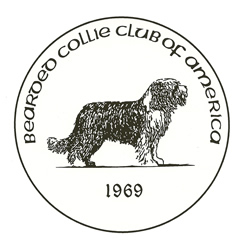We’d spent a pleasant afternoon cruising on Lake Ontario in a sailboat owned by a couple who had two Beardies of my breeding. The Beardies, Maadi and Sky, were well accustomed to sailing and thoroughly enjoyed an outing on the bay. Attired in their canine life jackets, they cavorted on the deck like sure-footed old salts. After docking at the marina, we wandered over to a children’s play area where an intriguing pyramid of logs invited climbing. It was too irresistible. “Let’s go, Maadi!” I called out to the older Beardie and together we raced to it and scrambled up to the top. Her owner watched in amazement. “I never thought she could do something like that!” she exclaimed. “Have you ever tried?” I replied.
While some owners consider it a minor miracle if their dogs come when called or sit to have their leads attached, other folks have tried to learn just how much their dogs can actually accomplish. And often they’ve been pleasantly surprised. Sometimes amazed. “My dog will never be able to do that!” It’s a familiar lament every obedience instructor has heard in the beginners’ class. Usually it’s not long before the dog has mastered the ‘impossible’ exercise and more. You never know until you give it a try.
Okay, so how many words does your dog know? His name (we hope), come, sit, treat, dinner, walk, off, go for a ride and perhaps leave it (aka no-no-bad-dog). Any more? How about something over a thousand words? That’s the vocabulary of a Border Collie named Chaser. He was taught by Dr. John Pilley, a retired psychology professor who wanted to know his canine’s capabilities. It’s apparent Chaser is intelligent but it’s also obvious Dr. Pilley spent untold hours teaching his pal to put names to hundreds of toys and articles. There’s the catch. Your dog may be capable of all sorts of things but you’ll have to introduce him to the activity and then be teacher, coach and cheering section.
A short while ago, I enrolled my four-month-old Beardie pup in a nosework class. He’s a bright boy but I didn’t expect much due to his youth. What a delightful surprise when he quickly caught on to what was wanted. He was positively exuberant about tracking the scent and alerting to it. The youngest dog there emerged as the star pupil of the class. But I never would have known he could do it if we didn’t give it a try.
In bygone days, if you wanted to engage in an activity with your dog, you had the choice of conformation and/or obedience, plus -–depending on the breed– hunting, herding or coursing. Today, dog owners have a veritable feast of endeavours awaiting them. There’s a buffet offering such delights as agility, rally, heelwork to music (otherwise known as dancing with your dog), barn hunts, dock diving, nosework, earthdog trials, sled dog racing, skijoring, frisbee, tracking, herding, retriever trials, water rescue work, carting and weight pulls. On a more serious side, there’s search and rescue, therapy work, drug detection, and assistance work just for starters. When coursing, once the domain of sighthounds, was open to all breeds, a whole melange of unlikely breeds took up the challenge and charged in pursuit of ‘Bags’ Bunny. Bassets, Dachshunds, Rotties, Briards, Bulldogs, Bostons, Boxers, Poodles and even spirited little Podencos have added coursing titles after their names and had a ball doing it.
So if some activity sounds like fun, but you don’t know if your dog would do it, just remember, you’ll never know until you give it a try.
— alice bixler, Bearded Colllie Club of America, bcca.us




